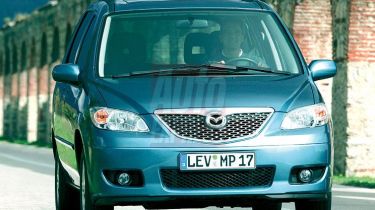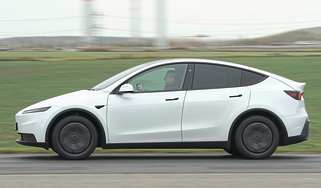Mazda MPV
There's nothing too complicated about Mazda's MPV. It does exactly what it says on the tin: carrying up to seven people in comfort while providing all the versatility of a small van. But when did you last see one of these cars on the road?
Mazda is keen for the success of its passenger cars to rub off on the largest model in its line-up. While the rather unimaginatively named MPV has never enjoyed the same high profile as class-leading people carriers, it offers plenty of equipment and versatility for the money. And although it's not the most inspirational seven-seater on the market, it's a decent all-rounder that's now safer and better value for money.
There's nothing too complicated about Mazda's MPV. It does exactly what it says on the tin: carrying up to seven people in comfort while providing all the versatility of a small van. But when did you last see one of these cars on the road?
Hoping to improve on dismal sales, Mazda has given its largest model a makeover. The bonnet, bumper, grille and clear-look headlamps are recognisable from Mazda's parts bin, while fresh tail-light clusters and alloys also appear.
The overall effect is inoffensive rather than attractive. Inside, the upgrade is equally subtle, with a new three-spoke steering wheel and chrome-effect trim. Meanwhile, mechanical modifications are designed to make the car safer.
Ventilated rear disc brakes replace the old drums, while ABS with EBD and traction control is standard across the range, meaning the MPV feels far more stable and competent on the road. The outgoing people carrier's two engines - a 2.3-litre petrol and 2.0-litre diesel unit - remain unchanged. Neither is particularly sporty, but both offer decent performance and economy.
The price list has also been left untouched, so the petrol model is £18,500, with the oil-burner coming in at £20,000 - and that places the Mazda in direct competition with Renault's Espace. The MPV is better than ever, but rivals still offer a more characterful family solution.



